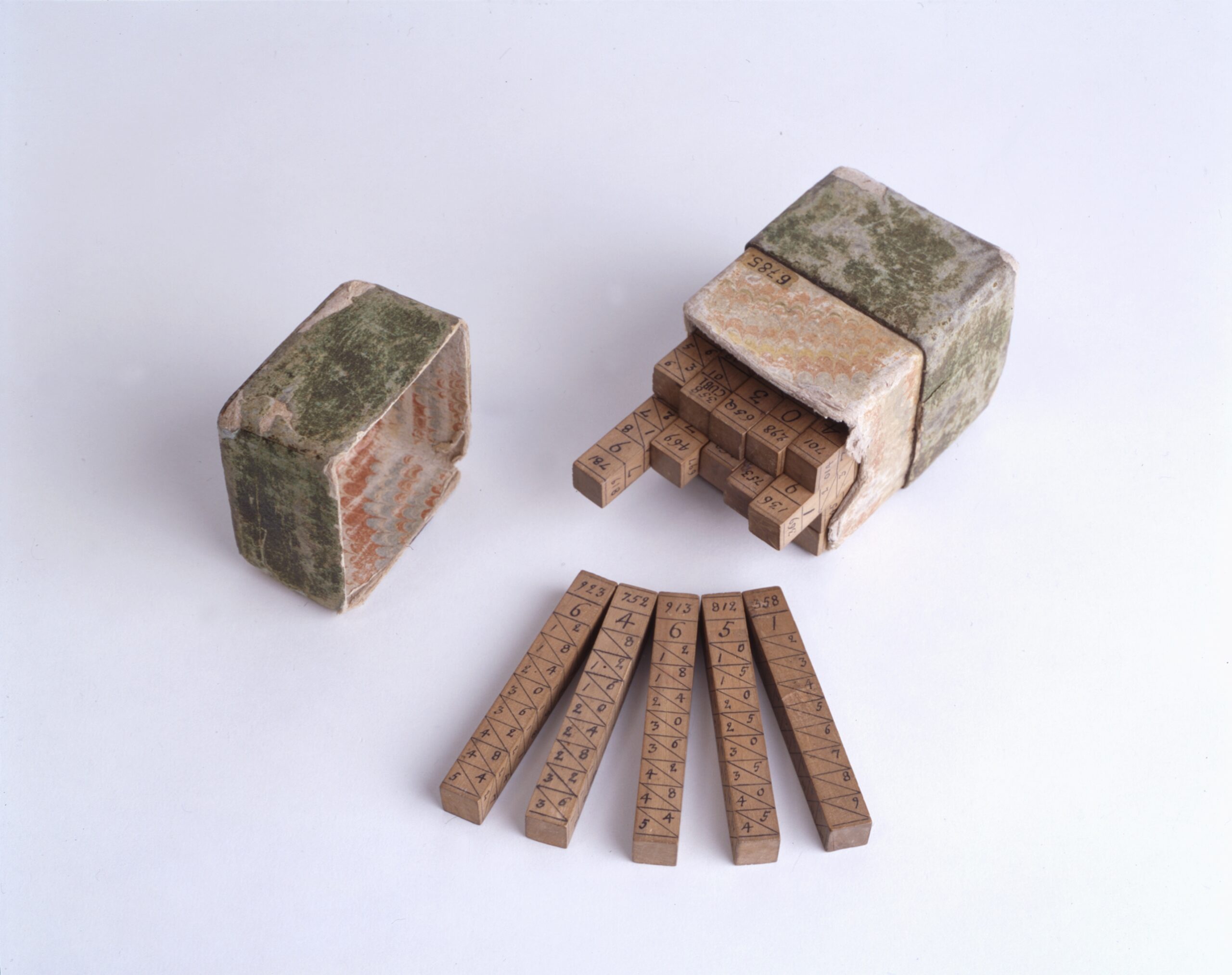The life of John Napier of Merchiston, a Scottish laird who lived from 1550 to 1617, is notable for many reasons. He was a fanatical Protestant for one thing, having written an infamous anti-Catholic screed entitled The Plaine Discovery of the Whole Revelation of St. John. He was also an alchemist, dabbling in the manufacture of the so-called philosopher’s stone, a mythic substance capable of all kinds of miracles. (He failed to make any, but then he was hardly the only one.)1
But Napier is best know for his invention of logarithms: an appropriately esoteric mathematical construct that allows difficult multiplications to be decomposed into simple additions. With a book of logarithms in hand, an astronomer (or, as like, an astrologer) could grapple with the motion of the spheres far more easily than before. It was a discovery that rippled across the mathematical firmament and made Napier one of its stars.2
Logarithms would soon be used by others to invent a multiplying device — the simple, ingenious slide rule — that would become indelibly associated with maths and engineering. But although Napier’s name is often spoken in connection with the slide rule, there is another device that he himself created, and which bears his name directly: Napier’s bones.

So called because some examples were made from bone-white ivory, Napier’s bones were a set of wooden rods inscribed with numbers along their length. To use them, one arranged the rods to match the multiplicand, or first number to be multiplied, and then read off individual results along the length of the rods according to the multiplier, or second number to be multiplied. The individual results were then summed, taking care to carry tens where necessary.3 And as fiddly as this sounds, Napier’s bones did make large multiplications considerably easier to carry out.
Napier published a description of how to make and use his rods only in the year of his death, and, in hindsight, they never quite scaled the heights of his other great invention. Certainly, Napier’s bones were better than logarithms in at least one sense, in that they allowed for precise multiplications of whole numbers rather. Yet as embodied in the slide rule, logarithms were astonishingly quick to use — as quick as an electronic pocket calculator, if somewhat less precise — and so the fate of Napier’s bones was sealed.
- 1.
-
Read, John. “Scottish Alchemy in the Seventeenth Century”. Chymia 1 (1948): 139-151. https://doi.org/10.2307/27757120.
- 2.
-
Molland, George. “Napier, John, of Merchiston (1550–1617), Mathematician”. Oxford Dictionary of National Biography.
- 3.
-
Bruderer, Herbert. “How Does One Multiply With Napier’s Rods?”. Accessed November 21, 2023.